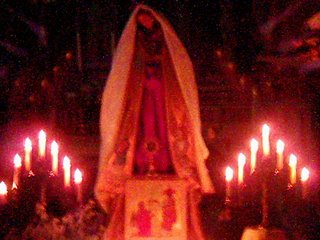
VATICAN CITY (AP) - Pope Benedict XVI appealed Sunday for an immediate ceasefire in the Middle East, hours after the deadliest attack in nearly three weeks of fighting between Israel and Hezbollah guerrillas.
"In the name of God, I appeal to all those responsible for this spiral of violence, so that they immediately put down their arms on all sides," the pope told pilgrims and tourists at his summer residence in Castel Gandolfo, on the outskirts of Rome.
Pausing slightly, he repeated the word "immediately."
"I appeal to governing leaders and to international institutions not to spare any effort to obtain this necessary cessation of hostilities," the pontiff said.
Much of the international community has been calling for an immediate ceasefire, but Israel and the United States have resisted, saying a settlement should address enduring issues between Lebanon and Israel and disable Hezbollah.
The faithful in the papal palace courtyard chanted "Peace! Peace! Peace!" in Italian, briefly interrupting the pontiff.
Benedict embraced their call. "Peace, yes," he said, before resuming his remarks.
"In this moment I cannot help but think of the situation, ever more grave and more tragic, that the Middle East is going through: hundreds of dead, so many wounded, a huge number of the homeless and refugees, houses, cities and infrastructure destroyed," Benedict said. "These facts demonstrate clearly that you cannot re-establish justice, create a new order and build authentic peace when you resort to instruments of violence."
It was Benedict's strongest appeal since the violence erupted.
Benedict urged all to pray "so that He may give his peace to that region and to the whole world."
Benedict also urged the intensification of humanitarian aid efforts.
Lebanon, which has a sizeable Maronite Catholic community, has asked the Vatican for helping in ending the warfare. The Pope has said he would contribute through appeals for peace, not political involvement.






 I would like to give every member of our parish a copy of this document - oh that our bishops would produce "a pastoral instruction" like this, because we seem to have the same problems.
I would like to give every member of our parish a copy of this document - oh that our bishops would produce "a pastoral instruction" like this, because we seem to have the same problems.










































